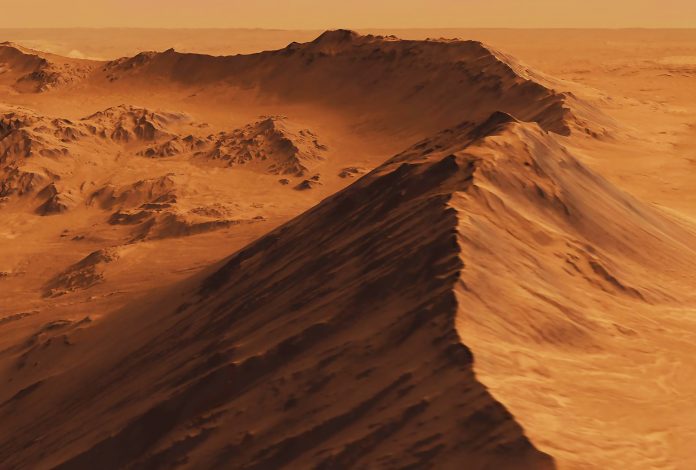Is solar energy better than nuclear energy? Scientists say solar tech could provide all the power needed for an extended mission to Mars
While the debate between solar energy and nuclear energy continues on Earth, some people are looking to the stars.
When it comes to space exploration, scientists are always trying to optimise the way that astronauts work – especially when it comes to efficiency of resources like energy, food and time itself.
Solar tech could power an extended mission to Mars, say researchers
Researchers at the University of California, Berkeley, say that the latest solar technology means photovoltaics could power an extended missions to Mars. The team even propose that a permanent settlement could be built there.
UC Berkeley bioengineering doctoral student Aaron Berliner, one of two first authors of the paper, said: “Photovoltaic energy generation coupled to certain energy storage configurations in molecular hydrogen outperforms nuclear fusion reactors over 50% of the planet’s surface, mainly within those regions around the equatorial band, which is in fairly sharp contrast to what has been proposed over and over again in the literature, which is that it will be nuclear power.”
If daytime energy produces hydrogen gas for fuel cells, solar can supplement everything
The findings, published in Frontiers in Astronomy and Space Sciences, uses a systems approach to compare these solar and nuclear technologies. This analysis looked at what it would be like for a six-person extended mission to Mars, involving a 480-day stay on the planet’s surface before returning to Earth.
Their analysis found that for settlement sites over nearly half the Martian surface, solar is comparable or better than nuclear – if you take into account the weight of the solar panels and their efficiency. This works as long as some daytime energy is used to produce hydrogen gas for use in fuel cells, to power the colony at night or during sandstorms.
Solar power, on the other hand, must be stored for use at night, which on Mars lasts about the same length of time as on Earth.
Omnipresent red dust on surface of Mars is a risk for solar cell technology
In February, 2021, the Perseverance rover touched down on Mars and gathered significant amounts of information for future, peopled expeditions.
The NASA team tested a way to produce oxygen, while identifying other resources like subsurface water and improved landing techniques. The Opportunity rover was successfully powered by solar panels on Mars. It only stopped working after 15 years, due to a massive dust storm in 2019. The red dust of the surface is a key obstacle for the efficiency of solar tech.
“This paper takes a global view of what power technologies are available and how we might deploy them, what are the best-use cases for them and where do they come up short,” said co-first author Anthony Abel, a graduate student in the Department of Chemical and Biomolecular Engineering.
“If humanity collectively decides that we want to go to Mars, this kind of systems-level approach is necessary to accomplish it safely and minimize cost in a way that’s ethical. We want to have a clear-eyed comparison between options, whether we’re deciding which technologies to use, which locations to go to on Mars, how to go and whom to bring.”











